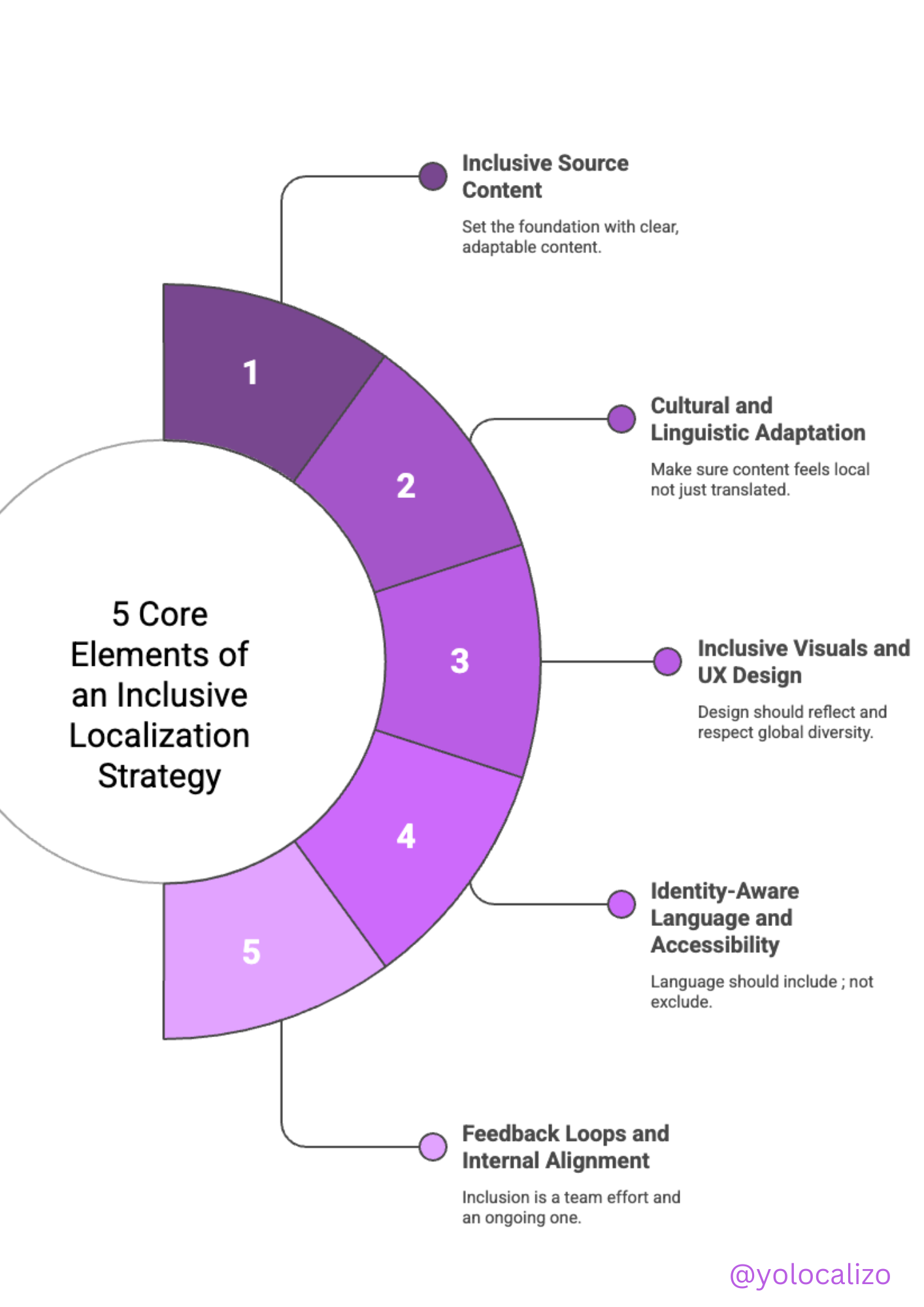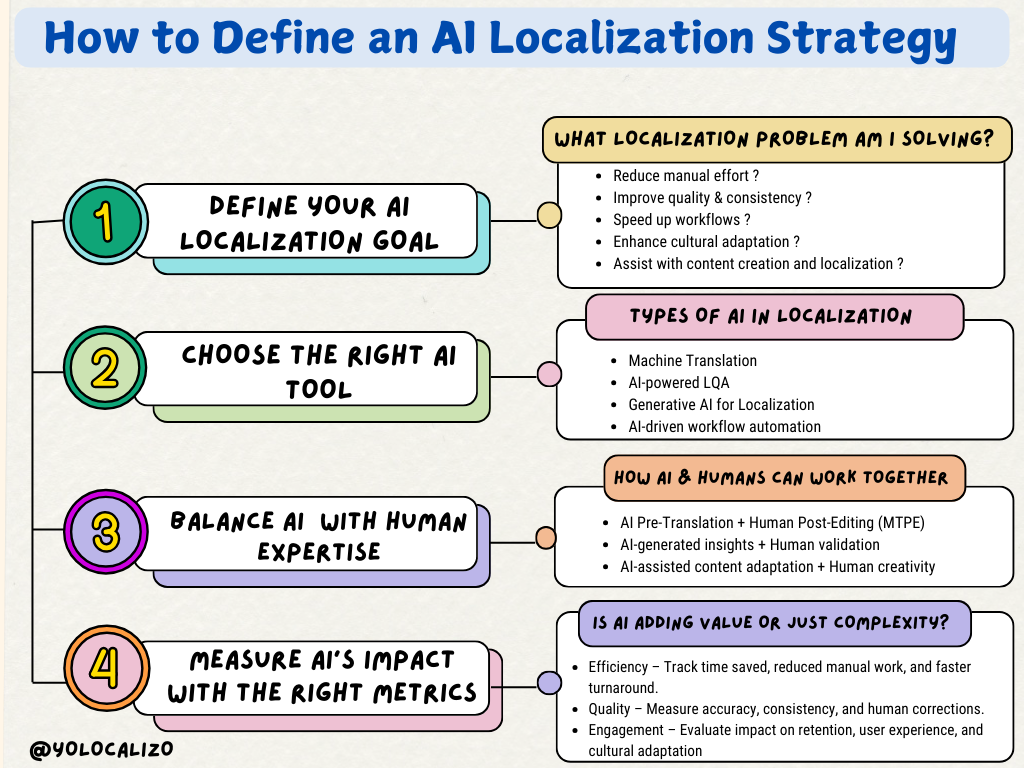Localization strategy, the 4 fights you have to win
If you have been a regular reader of this blog, you won't be surprised how many times I've written about the fact that Localization is a crucial step when it comes to bringing your global business to the next level. There’s a clear relationship between increasing your revenue in local markets and having a solid business localization strategy.
But, getting the right localization strategy might be very challenging, especially if you are setting your strategy for the very first time!
“A localization strategy is the market proposition an organization takes to identify consumers’ behaviors and social variances in each country”
There are so many areas that you might need to pay attention to that is a bit overwhelming just thinking about it, for example, we should think about
which markets to penetrate,
what type of content are we going to localize,
which outsourcing strategy (LSPs / freelance) or internal team you will employ,
what TMS tool will you adopt, (or if you will make it home-made in case you are from the client-side),
we should also think about how you will verify the linguistic quality,
other areas to focus on are for example how we will deal with customer support
from a method perspective, we will have to think about how to define the localization process in different areas such as how you will deal with glossaries, translation memories… or if you want to include MT in your localization workflow….
To sum up, there are a lot of things that we must take into account when we set out to conquer the international markets, and the objective of this article is ... to reassure you, do not get overwhelmed, there are too many things to pay attention to, and although my goal it is not discouraging you and overlooking some of the elements that I have mentioned above, what I want to do in this post is to analyze the most critical elements that a localization strategy must include.
Here are the 4 essential components that your localization strategy should include.
1.- Who are your clients?
An obvious question, but one that has a trap. We must pay attention to 2 important variables to know who our customers are ... we must be able to answer the questions
Which markets do I want to penetrate vs. what is the opportunity cost of the markets that I decide not to enter?
Entering all markets at once might not be the most cost-effective approach when it comes to crafting your localization strategy, your Localization strategy to conquer East European countries will differ widely from your strategy to conquer Asia.
When we are launching our digital product there are many barriers we may face to enter a new market, from legal issues to culturalization challenges. And although not even the most thought-out localization strategy can guarantee that everything will turn out as we plan, it is true that stopping to think about who our clients are will help us to overcome cultural hurdles when deploying our product in our targeted markets
How you will learn from your local audience preferences
Understanding who is your local audience is the cornerstone of any solid localization strategy. This understanding must include everything that drives our customer purchasing behaviors, as well as everything that worries your customer.
2.- Bring the right people to the table
As I wrote in this other article It takes a village to raise a globalized product a localization strategy is not the sole responsibility of one team, in this case, the localization team, everyone is responsible to contribute with their work to launch a successful global product, but what a Localization team is responsible for is to ensure that we involve the right people when discussing the launch of a global product.
We need to make sure that we have the support of an executive sponsor, we must make sure that we have feedback from the engineering team on how our localization tools will be integrated into the tech framework, we also have to make sure that we have marketing feedback and how the marketing strategy will be carried out in the different regions that we are operating ...
In short, until you have the feedback from the different key stakeholders, you should not go to the next phase in your localization strategy since the lack of feedback and/ or alignment with any of these stakeholders could be a difficult problem to fix later.
3-. Determine your outsourcing strategy
Single-vendor, multi-vendor, or in-house team?
There are pros and cons to each and the choice is very specific to your needs.
During my career, I have been involved in different setups, and there is no one better than another, well, actually there is, at least for me, if I had an infinite budget I would have a team of internal translators 100% dedicated to my project, but of course, what business today can be allowed to operate in an environment in which budget is not a problem?
In-house teams minimize the problems of security leaks and being part of the company is easier for them to have the context of the work they are doing, although, on the other hand, they present a series of challenges such as difficulties in rapidly scaling resources.
A single vendor can offer you the competitive cost (based on volumes) but all apples in the same basket might be a dangerous strategy
Using multiple vendors might help you to have competitive cost (due to competitive bidding in an RFP), but you'll spend more time doing project management and ensuring the deliverables are consistent across the different LSPs
Take time to think about what outsourcing strategy you are going to follow, analyze the pros and cons of each option, do not rush, as this assessment is vitally important when creating an effective localization strategy.
4. Measure what matters
It’s all about the data we collect and how we use it.
KPIs in our industry are always problematic, not only to know what KPIs to create, but also because it is an industry that has traditionally struggled to measure things. We have always spoken from a subjective point of view, "this translation sounds weird" and despite the different efforts over the years through different standards: Lisa, Taus, DQF nowadays ... the KPIs in the Globalization industry has room for improvement.
We are even in diapers I would dare to say. We need to be able to create a solid data collection that helps our Localization team determine the added value that Localization brings to the benefits of the company; and we also need KPIs that allow us to improve our internal processes, make them more efficient, and with fewer problems to define what is quality and how to improve the quality of our services, of our processes.
When shaping your localization strategy make sure you take the time to define which metrics you are going to track and take the time to define how good results will look like
If you need some inspiration to define your metrics ecosystem these 2 slides I created might be useful for you
In summary
A good localization strategy takes time and resources.
It's a long-term activity and it might be a process very intimidating when you do it the first time.
As it’s said strategy is the forest; tactics or production elements are the trees.
You need both.
Our work as Localization professional is to bring tactics and strategy together
Use these four elements to shape your localization strategy and you will better equipped to conquer the global markets!
@yolocalizo















Localizability has always been a challenge small issues in source content often lead to big problems later in translation. In this post, I explore how AI is giving localization teams a powerful new way to improve source quality, reduce friction, and create better content for every market right from the start.